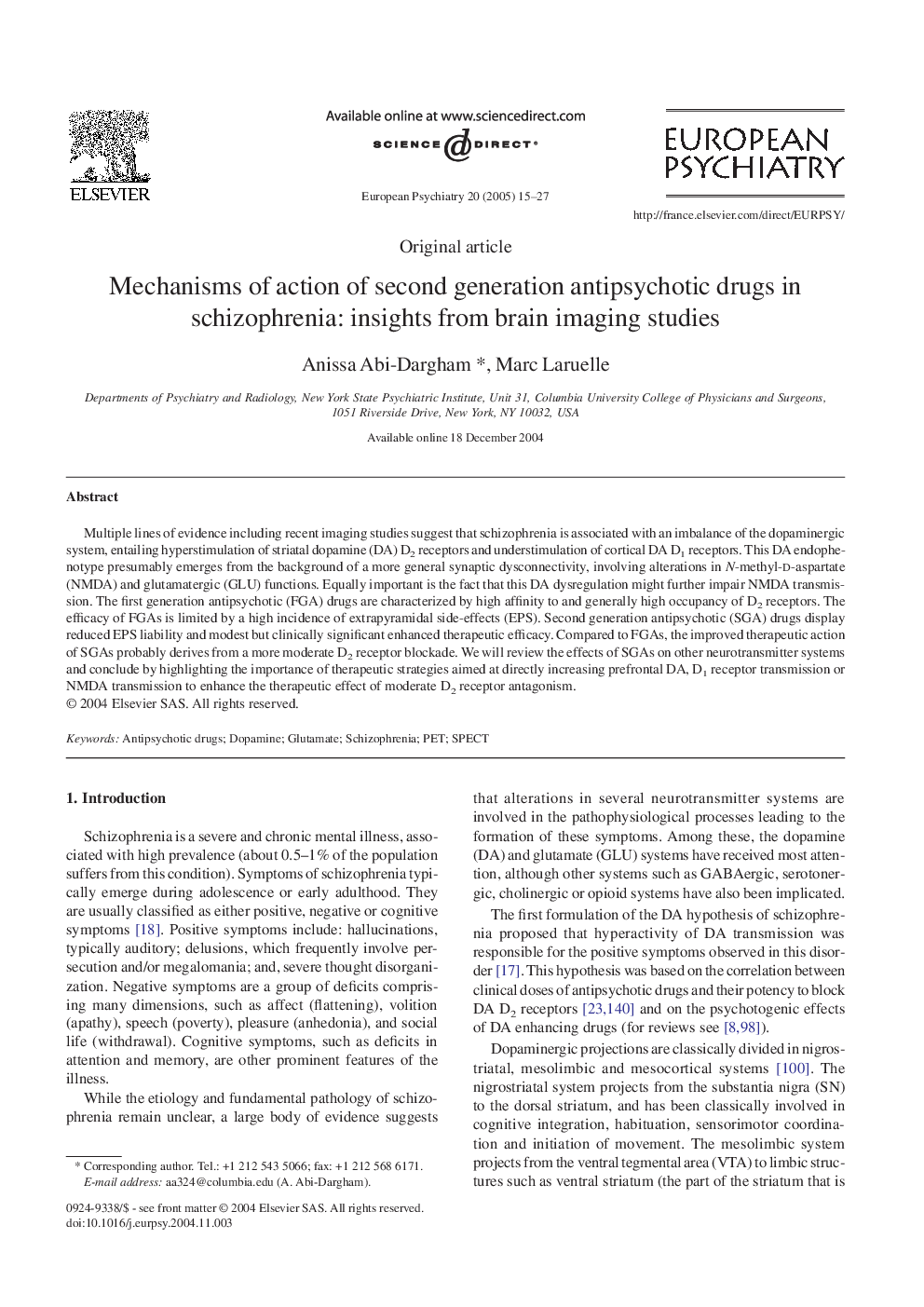| کد مقاله | کد نشریه | سال انتشار | مقاله انگلیسی | نسخه تمام متن |
|---|---|---|---|---|
| 9379719 | 1277384 | 2005 | 13 صفحه PDF | دانلود رایگان |
عنوان انگلیسی مقاله ISI
Mechanisms of action of second generation antipsychotic drugs in schizophrenia: insights from brain imaging studies
دانلود مقاله + سفارش ترجمه
دانلود مقاله ISI انگلیسی
رایگان برای ایرانیان
کلمات کلیدی
موضوعات مرتبط
علوم پزشکی و سلامت
پزشکی و دندانپزشکی
روانپزشکی و بهداشت روانی
پیش نمایش صفحه اول مقاله

چکیده انگلیسی
Multiple lines of evidence including recent imaging studies suggest that schizophrenia is associated with an imbalance of the dopaminergic system, entailing hyperstimulation of striatal dopamine (DA) D2 receptors and understimulation of cortical DA D1 receptors. This DA endophenotype presumably emerges from the background of a more general synaptic dysconnectivity, involving alterations in N-methyl-d-aspartate (NMDA) and glutamatergic (GLU) functions. Equally important is the fact that this DA dysregulation might further impair NMDA transmission. The first generation antipsychotic (FGA) drugs are characterized by high affinity to and generally high occupancy of D2 receptors. The efficacy of FGAs is limited by a high incidence of extrapyramidal side-effects (EPS). Second generation antipsychotic (SGA) drugs display reduced EPS liability and modest but clinically significant enhanced therapeutic efficacy. Compared to FGAs, the improved therapeutic action of SGAs probably derives from a more moderate D2 receptor blockade. We will review the effects of SGAs on other neurotransmitter systems and conclude by highlighting the importance of therapeutic strategies aimed at directly increasing prefrontal DA, D1 receptor transmission or NMDA transmission to enhance the therapeutic effect of moderate D2 receptor antagonism.
ناشر
Database: Elsevier - ScienceDirect (ساینس دایرکت)
Journal: European Psychiatry - Volume 20, Issue 1, January 2005, Pages 15-27
Journal: European Psychiatry - Volume 20, Issue 1, January 2005, Pages 15-27
نویسندگان
Anissa Abi-Dargham, Marc Laruelle,